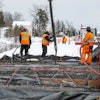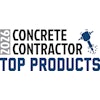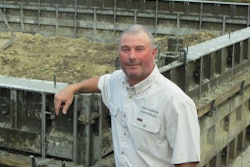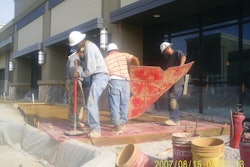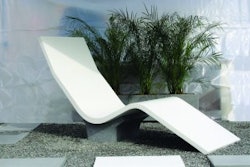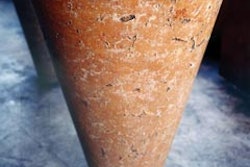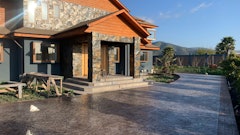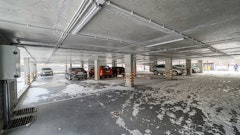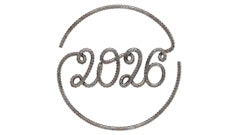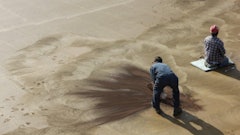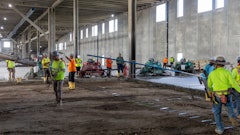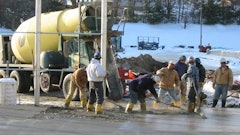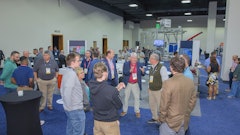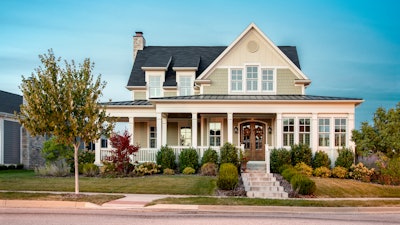
With today's storms, unpredictable weather conditions, and the status of our ever-changing economy, the concrete home concept has provided a long-term possibility for increasing a home's resiliency. Modern design ideas are increasingly becoming more creative with concrete—creativity which can affect the home's value. While the idea of a residential home made of concrete isn't new, the benefits to the structure and homeowner's pocketbook are strong as ever.
Instead of the concrete for foundations, walls, or even the landscaping - one area that doesn't get a lot of attention is the siding. One of the products on the market addresses just that.
Fiber cement siding and trim is created by combining Portland cement, sand, water, and cellulose fibers. With that formula oversimplified, one could consider it concrete. It features durability, a long-lasting life cycle, and is low maintenance. James Hardie, a preeminent manufacturer of high-performance fiber cement products— having pioneered the technology in the 1980s—shares the top benefits, along with tips and best practices for installation.
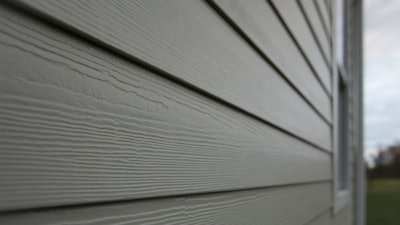 James Hardie
James Hardie
Protection
Fiber cement exteriors deliver exceptional resistance to weather and protection against extreme heat or cold, often matching or outperforming wood-based or vinyl siding. Cold weather may cause vinyl siding to crack. Changes in moisture and humidity can cause wood to expand and contract. However, according to James Hardie, fiber cement will not rot when wet, can withstand the impact of hail or windblown debris, will not melt, and is "unappealing to pests and critters who sometimes feed on or burrow into other types of siding."
Design Possibilities
The added benefit of protection against the elements does not mean you need to compromise on decorative design. Fiber cement can achieve any look from sleek and modern to charming colonial. A fiber cement product can add style and value to a home’s exterior, without losing functionality. Siding panels, trim, shingles and soffit are available in a wide range of durable profiles, textures, widths, and colors - options to empower contractors to give customers the home of their dreams and bring their exterior design vision to life.
Installation & Care Tips
Create a Checklist of Essential Tools
First-class installation can be achieved using a number of tools. For cutting siding and trim products on the jobsite, circular or power miter saws and jigsaws are efficient, and to use masonry bits if you need to drill holes. Though James Hardie does suggest equipping your saw with a Hardie Blade saw blade for cutting Hardie fiber cement products.
James Hardie’s portfolio of fiber cement products can be hand-nailed or fastened with a pneumatic tool, but the latter is highly recommended. Siding guns or roofing nail guns can be used to fasten, provided they are adjusted to the appropriate settings and use the fasteners specified in the installation instructions. Also, be sure to have essential hand tools on site such as contractor tape measure, torpedo level, writing utensils, smooth-faced hammer and speed square to make the process easier.
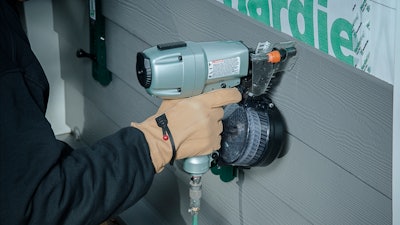 James Hardie
James Hardie
Develop a Work Plan
To ensure installation efficiency, it’s important to establish a work plan with your team and crew. At the start of each day, make sure that the whole team is on the same page and tracking toward daily goals together. Organization, communication, and due diligence are key for a successful installation.
Review the official installation instructions and best practice guide for each product and its relating “Hardie Zone,” as each product has its own specific process. For example, Hardie® Plank lap siding with ColorPlus® Technology is shipped with a protective laminate slip sheet to reduce marring and scratching; remove this slip sheet following installation.
Safety
Keep an organized jobsite with clear roles and expectations. Positively reinforce safe behaviors with your crew. Maintain frequent communication and hold regular safety meetings. Special precautions also need to be taken into consideration when you’re working in the winter in cold climates, as well as the hot summer months when renovation season is at its busiest.
Cleaning & Maintenance
While fiber cement products are a lower maintenance solution, it’s important to ensure that they are cleaned and maintained in the proper way. To remove dirt, dust or other materials that may have built up over construction, use water and a soft cloth or brush to gently wash the surface.


